#Maria Elizabeth of Sweden
Text


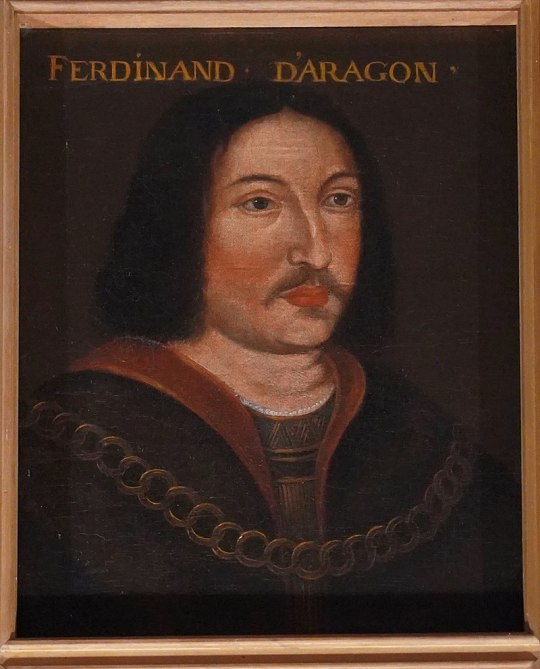

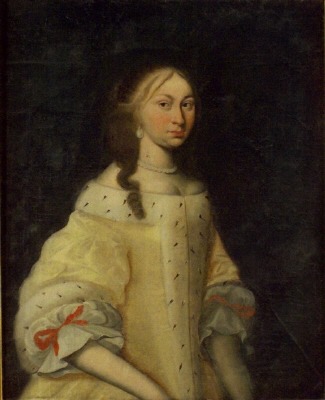
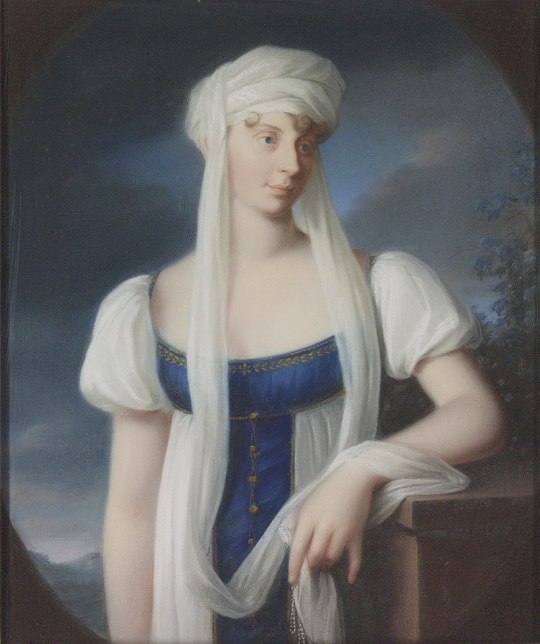

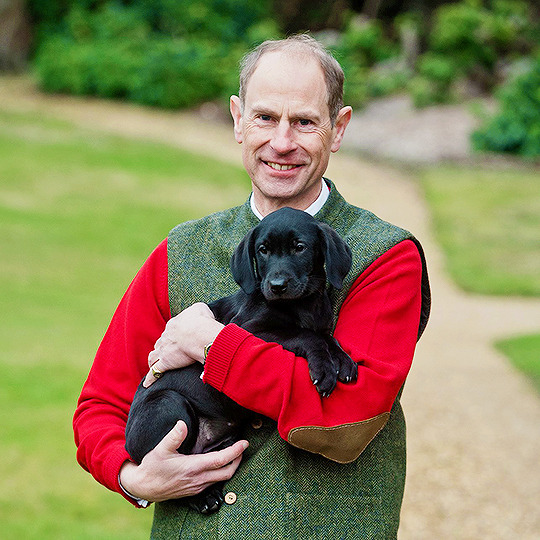
Royal Birthdays for today, March 10th:
Qian Liu, King of Wuyue, 852
Vasily II, Grand Prince of Moscow, 1415
Ferdinand II, King of Aragon, 1452
Ferdinand I, Holy Roman Emperor, 1503
Maria Elizabeth of Sweden, Duchess of Östergötland , 1596
Louise of Mecklenburg-Strelitz, Queen of Prussia, 1776
Alexander III, Tsar of Russia, 1845
Prince Edward, Duke of Edinburgh, 1964
#prince edward#duke of edinburgh#alexander iii#Louise of Mecklenburg-Strelitz#maria elizabeth of sweden#ferdinand i#ferdinand ii#vasily ii#qian liu#royal birthdays#long live the queue
15 notes
·
View notes
Text

The focus of the photograph for me is the Empress María Alexandrovna. I am always looking for pictures of her, as she is described as beautiful when young. I can see indications of that in pictures such as this one, but I am also beginning to understand why it might have been that many mistook her shyness for coldness and aloofness.
On the photograph from left to right: Julie, Princess of Battenberg; Elizabeth of Prussia, Princess and Prince Carl of Hesse, Prince Wilhelmina of Hesse, Empress Marie Alexandrovna, Prince Louis of Hesse; Prince Gustav Vasa from Sweden; Princess Alice of Hesse and Prince Alexander of Hesse
#romanov family#romanov dynasty#vintage photography#Empress Maria Alexandrovna#Julie Princess of Battenberg#Elizabeth of Prussia#Princess Carl of Hesse#Prince Carl of Hesse#Prince Louis of Hesse#Prince Carl Vasa of Sweden#Princess Alice of Hesse#Prince Alexander of Hesse
14 notes
·
View notes
Text
Friends, enemies, comrades, Jacobins, Monarchist, Bonapartists, gather round. We have an important announcement:
The continent is beset with war. A tenacious general from Corsica has ignited conflict from Madrid to Moscow and made ancient dynasties tremble. Depending on your particular political leanings, this is either the triumph of a great man out of the chaos of The Terror, a betrayal of the values of the French Revolution, or the rule of the greatest upstart tyrant since Caesar.
But, our grand tournament is here to ask the most important question: Now that the flower of European nobility is arrayed on the battlefield in the sexiest uniforms that European history has yet produced (or indeed, may ever produce), who is the most fuckable?
The bracket is here: full bracket and just quadrant I
Want to nominate someone from the Western Hemisphere who was involved in the ever so sexy dismantling of the Spanish empire? (or the Portuguese or French American colonies as well) You can do it here
The People have created this list of nominees:
France:
Jean Lannes
Josephine de Beauharnais
Thérésa Tallien
Jean-Andoche Junot
Joseph Fouché
Charles Maurice de Talleyrand
Joachim Murat
Michel Ney
Jean-Baptiste Bernadotte (Charles XIV of Sweden)
Louis-Francois Lejeune
Pierre Jacques Étienne Cambrinne
Napoleon I
Marshal Louis-Gabriel Suchet
Jacques de Trobriand
Jean de dieu soult.
François-Étienne-Christophe Kellermann
17.Louis Davout
Pauline Bonaparte, Duchess of Guastalla
Eugène de Beauharnais
Jean-Baptiste Bessières
Antoine-Jean Gros
Jérôme Bonaparte
Andrea Masséna
Antoine Charles Louis de Lasalle
Germaine de Staël
Thomas-Alexandre Dumas
René de Traviere (The Purple Mask)
Claude Victor Perrin
Laurent de Gouvion Saint-Cyr
François Joseph Lefebvre
Major Andre Cotard (Hornblower Series)
Edouard Mortier
Hippolyte Charles
Nicolas Charles Oudinot
Emmanuel de Grouchy
Pierre-Charles Villeneuve
Géraud Duroc
Georges Pontmercy (Les Mis)
Auguste Frédéric Louis Viesse de Marmont
Juliette Récamier
Bon-Adrien Jeannot de Moncey
Louis-Alexandre Berthier
Étienne Jacques-Joseph-Alexandre Macdonald
Jean-Mathieu-Philibert Sérurier
Catherine Dominique de Pérignon
Guillaume Marie-Anne Brune
Jean-Baptiste Jourdan
Charles-Pierre Augereau
Auguste François-Marie de Colbert-Chabanais
England:
Richard Sharpe (The Sharpe Series)
Tom Pullings (Master and Commander)
Arthur Wellesley, 1st Duke of Wellington
Jonathan Strange (Jonathan Strange & Mr. Norrell)
Captain Jack Aubrey (Aubrey/Maturin books)
Horatio Hornblower (the Hornblower Books)
William Laurence (The Temeraire Series)
Henry Paget, 1st Marquess of Anglesey
Beau Brummell
Emma, Lady Hamilton
Benjamin Bathurst
Horatio Nelson
Admiral Edward Pellew
Sir Philip Bowes Vere Broke
Sidney Smith
Percy Smythe, 6th Viscount Strangford
George IV
Capt. Anthony Trumbull (The Pride and the Passion)
Barbara Childe (An Infamous Army)
Doctor Maturin (Aubrey/Maturin books)
William Pitt the Younger
Robert Stewart, 2nd Marquess of Londonderry (Lord Castlereagh)
George Canning
Scotland:
Thomas Cochrane
Colquhoun Grant
Ireland:
Arthur O'Connor
Thomas Russell
Robert Emmet
Austria:
Klemens von Metternich
Friedrich Bianchi, Duke of Casalanza
Franz I/II
Archduke Karl
Marie Louise
Franz Grillparzer
Wilhelmine von Biron
Poland:
Wincenty Krasiński
Józef Antoni Poniatowski
Józef Zajączek
Maria Walewska
Władysław Franciszek Jabłonowski
Adam Jerzy Czartoryski
Antoni Amilkar Kosiński
Zofia Czartoryska-Zamoyska
Stanislaw Kurcyusz
Russia:
Alexander I Pavlovich
Alexander Andreevich Durov
Prince Andrei (War and Peace)
Pyotr Bagration
Mikhail Miloradovich
Levin August von Bennigsen
Pavel Stroganov
Empress Elizabeth Alexeievna
Karl Wilhelm von Toll
Dmitri Kuruta
Alexander Alexeevich Tuchkov
Barclay de Tolly
Fyodor Grigorevich Gogel
Ekaterina Pavlovna Bagration
Ippolit Kuragin (War and Peace)
Prussia:
Louise von Mecklenburg-Strelitz
Gebard von Blücher
Carl von Clausewitz
Frederick William III
Gerhard von Scharnhorst
Louis Ferdinand of Prussia
Friederike of Mecklenburg-Strelitz
Alexander von Humboldt
Dorothea von Biron
The Netherlands:
Ida St Elme
Wiliam, Prince of Orange
The Papal States:
Pius VII
Portugal:
João Severiano Maciel da Costa
Spain:
Juan Martín Díez
José de Palafox
Inês Bilbatua (Goya's Ghosts)
Haiti:
Alexandre Pétion
Sardinia:
Vittorio Emanuele I
Lombardy:
Alessandro Manzoni
Denmark:
Frederik VI
Sweden:
Gustav IV Adolph
46 notes
·
View notes
Text

I’m not good at putting my feelings into text, nor am I a writer, or good at literature analysis, but I do have thoughts.
I never liked SSO’s writing to begin with. The writing of SL was okay for a game of that scope. I loved the mystery of a seaside town and strange powers that be. But SSO’s writing is confusing to me.
Dialogues almost always try to be funny, relatable, and it comes across as shallow or boring. I try to read all the dialogue because I am invested in the universe by now and I want to know everything about the events of the world and it’s characters. But lord is it hard sometimes to not skip the repetitive, shallow dialogue.
The characters lack debth and it is hard for me to like any of them. It feels like the Soul riders are just written as stereotypes. Don’t know something? Talk to Linda, she knows everything and loves doing research! She’s a nerd! Alex is the hurr durr let’s do shit without thinking anything over. Haha, Lightning goes zap zap!! Elizabeth is our teacher. A druid. And? Fripp? What even is Fripp? “Mysterious” leader who I don’t know anything about or don’t spend any time with. Who comes across as emotionless and disinterested in his charges. Avalon? Recluse who barely shows up and when he does, he always disagrees with everything.
I like that SSE has been trying to focus on the characters more. Elizabeth’s death didn’t make me feel anything because I just didn’t know her, didn’t have any attachments to her. If anything I laughed during that scene because of the way she ass slammed Darko like that Ground Slam Ash of War from Elden Ring, then got turned into Annie from Attack on Titan, and then blew herself up. That scene should have been an emotional story beat that should have gripped me and made me sad. Red Dead Redemption does that so well. I cried a lot during that game. I wish SSE took the characters seriously tho. It’s like every quest is an episode of The Simpsons where shit happens, it never gets acknowledged after, the characters don’t change. Every episode is a new start. I really like that they commited to the darker and real events, such as Lisa losing her mother, Alex having a dysfunctional low income family, and Anne getting over the real trauma of Concordes death, her kidnapping, and isolation. BUT THEY DON’T GO ANYWHERE WITH IT.
I want to love these characters and I want them to feel like real people, but it’s hard when they get treated as a joke, or the real and traumatic things that happened to them never get acknowleged and have no impact on them or the story. What about Linda and the betrayal of the Baroness? What about Meteor being lost. She didn’t even mention Meteor until the spymaster sent MC to tell her where Meteor was. And I am still waiting for the new Fort Maria quest to see the dynamic between the druids and the Soul Riders after the events of Justin’s rescue.
And the story…. Sometimes it just feels too whacky to me. I don’t know if the witches and golden apples are some folklore from Sweden, but I did not expect that when I first played through, and I did not like it. It felt like the game was spreading itself too thin? It felt out of place to me.
And sometimes, the quests feel like they have no impact. We need to do a difficult thing. Ha let’s do it this way. Go there. Click the ground. Done, we did it, yay!! It just feels very childish, lacking weight. I’m not sure how to put this into words, and I think there are people out there who are much better at this then I am.
I disliked the new Alex quest and felt unsatisfied. The whole questline had me anxious because the job of an event planner is so hard for me as a person with zero organisation skills and confidence. I am sure it is a very important and difficult job, and I was waiting for how SSE handled it. The entire time I felt like MC and Alex were not making any actual tuall progress. Then the whole thing got derailed to “let’s record a narrated tour of the CIty”. And when the quest ended, I was like “that’s it?”
The cinematic for Alex shows a resourceful, hard working and strong individual who got delt a bad hand, but found hope in Elizabeth. But the game keeps treating her like a stupid comic relief character who can only do one thing, and that is use her lightning power no matter the occasion. Even the Freeing Anne quest felt off to me. Why would Alex chose to go back and face Darko alone, when they keep rehashing the theme of “we’re stronger together”. Her power can be fueled by anger, but her main thing is to protect her loved ones. They got Anne, her priority should have been to get Anne out of there, not come back alone for Darko. It just felt like the writers did that because they needed Elizabeth to die, and MC getting stranded in Pandoria so that Lisa could use her singing power. And how would getting blown off a cliff into a bottomless space get rid of a powerful individual who can easily teleport himself and other people?
I really wish SSO would hire actual writers do deal with their story, the structure of the story, and the characters. Helena did such a good job making the main cast feel real, and structuring the story.
TLDR: SSE please hire a writer, and stop treating your characters like stereotypes. Stop treating Alex like a stupid person who goes zap
#sso#sso critical#sso alex#sso fripp#sso elizabeth#sso linda#sso meteor#sso darko#sso anne#sso story#long post#also anyone feel free to add to this or tell me im wrong#im not great at writing or analyzing stuff i only feel#sso spoilers
66 notes
·
View notes
Text
Wives and Daughters of Holy Roman Emperors: Age at First Marriage
I have only included women whose birth dates and dates of marriage are known within at least 1-2 years, therefore, this is not a comprehensive list.
This list does not include women who died before their husbands were crowned Emperor. It spans between the beginning of the reign of Otto I (962 CE) and the end of the reign of Francis II (1806 CE).
The average age at first marriage among these women was 17. The sample size was 91 women. The youngest bride, Bianca Maria Sforza, was just 2 years old when she wed her first husband, who was himself 9. The oldest bride, Constance of Sicily, was 32 years old.
Adelaide of Italy, wife of Otto I, HRE: age 15 when she married Lothair II, King of Italy, in 947 CE
Liutgarde of Saxony, daughter of Otto I, HRE: age 15 when she married Conrad the Red, Duke of Lorraine, in 947 CE
Theophanu, wife of Otto II, HRE: age 17 when she married Otto in 972 CE
Cunigunde of Luxembourg, wife of Henry II, HRE: age 24 when she married Henry in 999 CE
Gisela of Swabia, wife of Conrad II, HRE: age 12 when she married Brun I of Brunswick in 1002 CE
Agnes of Poitou, wife of Henry III, HRE: age 18 when she married Henry in 1043 CE
Matilda of Germany, daughter of Henry III, HRE: age 11 when she married Rudolf of Rheinfelden in 1059 CE
Judith of Swabia, daughter of Henry III, HRE: age 9 when she married Solomon, King of Hungary in 1063 CE
Bertha of Savoy, wife of Henry IV, HRE: age 15 when she married Henry in 1066 CE
Agnes of Waiblingen, daughter of Henry IV, HRE: age 14 when she married Frederick I, Duke of Swabia in 1086 CE
Empress Matilda, wife of Henry V, HRE: age 12 when she married Henry in 1114 CE
Beatrice I, Countess of Burgundy, wife of Frederick I, HRE: age 13 when she married Frederick in 1156 CE
Beatrice, daughter of Frederick I, HRE: age 10 when she married Guillaume II, Count of Chalon in 1173 CE
Constance, Queen of Sicily, wife of Henry IV, HRE: age 32 when she married Henry IV in 1186 CE
Beatrice of Swabia, first wife of Otto IV, HRE: age 14 when she married Otto in 1212 CE
Maria of Brabant, second wife of Otto IV, HRE: age 24 when she married Otto in 1214 CE
Constance of Aragon, first wife of Frederick II, HRE: age 19 when she married Emeric of Hungary in 1198 CE
Isabella II of Jerusalem, second wife of Frederick II, HRE: age 13 when she married Frederick in 1225 CE
Isabella of England, third wife of Frederick II, HRE: age 21 when she married Frederick in 1235 CE
Margaret of Sicily, daughter of Frederick II, HRE: age 14 when she married Albert II, Margrave of Meissen in 1255 CE
Anna of Hohenstaufen, daughter of Frederick II, HRE: age 14 when she married John III Doukas Vatatzes in 1244 CE
Marie of Luxembourg, daughter of Henry VII, HRE: age 18 when she married Charles IV of France in 1322 CE
Beatrice of Luxembourg, daughter of Henry VII, HRE: age 13 when she married Charles I of Hungary in 1318 CE
Margaret II, Countess of Hainaut, wife of Louis IV, HRE: age 13 when she married Louis in 1324 CE
Matilda of Bavaria, daughter of Louis IV, HRE: age 10 when she married Frederick II, Margrave of Meissen in 1323 CE
Beatrice of Bavaria, daughter of Louis IV, HRE: age 12 when she married Eric XII of Sweden in 1356 CE
Anna von Schweidnitz, wife of Charles IV, HRE: age 14 when she married Charles in 1353 CE
Elizabeth of Pomerania, wife of Charles IV, HRE: age 16 when she married Charles in 1378 CE
Margaret of Bohemia, daughter of Charles IV, HRE: age 7 when she married Louis I of Hungary in 1342 CE
Catherine of Bohemia, daughter of Charles IV, HRE: age 14 when she married Rudolf IV, Duke of Austria in 1356 CE
Elisabeth of Bohemia, daughter of Charles IV, HRE: age 8 when she married Albert III, Duke of Austria in 1366 CE
Anne of Bohemia, daughter of Charles IV, HRE: age 16 when she married Richard II of England in 1382 CE
Margaret of Bohemia, daughter of Charles IV, HRE: age 8 when she married John III, Burgrave of Nuremburg in 1381 CE
Barbara of Cilli, wife of Sigismund, HRE: age 13 when she married Sigismund in 1405 CE
Elizabeth of Luxembourg, daughter of Sigismund, HRE: age 13 when she married Albert II of Germany in 1422 CE
Eleanor of Portugal, wife of Frederick III, HRE: age 18 when she married Frederick in 1452 CE
Kunigunde of Austria, daughter of Frederick III, HRE: age 22 when she married Albert IV, Duke of Bavaria in 1487 CE
Bianca Maria Sforza, wife of Maximilian I, HRE: age 2 when she married Philibert I, Duke of Savoy in 1474 CE
Margaret of Austria, daughter of Maximilian I, HRE: age 17 when she married John, Prince of Asturias in 1497 CE
Barbara von Rattal, daughter of Maximilian I, HRE: age 15 when she married Siegmund von Dietrichstein in 1515 CE
Dorothea of Austria, daughter of Maximilian I, HRE: age 22 when she married Johan I of East Frisia in 1538 CE
Isabella of Portugal, wife of Charles V, HRE: age 23 when she married Charles in 1526 CE
Maria of Austria, daughter of Charles V, HRE: age 20 when she married Maximilian II, HRE in 1548 CE
Joanna of Austria, daughter of Charles V, HRE: age 17 when she married John Manuel, Prince of Portugal in 1552 CE
Margaret of Parma, daughter of Charles V, HRE: age 14 when she married Alessandro de’ Medici, Duke of Florence, in 1536 CE
Elizabeth of Austria, daughter of Ferdinand I, HRE: age 16 when she married Sigismund II Augustus of Poland in 1543 CE
Anna of Austria, daughter of Ferdinand I, HRE: age 17 when she married Albert V, Duke of Bavaria in 1546 CE
Maria of Austria, daughter of Ferdinand I, HRE: age 15 when she married William of Julich-Cleves-Berg in 1546 CE
Catherine of Austria, daughter of Ferdinand I, HRE: age 16 when she married Francesco III Gonzaga in 1559 CE
Eleanor of Austria, daughter of Ferdinand I, HRE: age 27 when she married William I, Duke of Mantua in 1561 CE
Barbara of Austria, daughter of Ferdinand I, HRE: age 26 when she married Alfonso II d’Este in 1565 CE
Joanna of Austria, daughter of Ferdinand I, HRE: age 18 when she married Francesco I de’ Medici in 1565 CE
Anna of Austria, daughter of Maximilian II, HRE: age 21 when she married Philip II of Spain in 1570 CE
Elisabeth of Austria, daughter of Maximilian II, HRE: age 16 when she married Charles IX of France in 1570 CE
Anna of Tyrol, wife of Matthias, HRE: age 26 when she married Matthias in 1611 CE
Eleonora Gonzaga the Elder, wife of Ferdinand II, HRE: age 24 when she married Ferdinand in 1622 CE
Maria Anna of Austria, daughter of Ferdinand II, HRE: age 25 when she married Maximilian I, Elector of Bavaria in 1635 CE
Cecilia Renata of Austria, daughter of Ferdinand II, HRE: age 26 when she married Władysław IV of Poland in 1637 CE
Maria Anna of Spain, wife of Ferdinand III, HRE: age 25 when she married Ferdinand in 1631 CE
Maria Leopoldine of Austria, wife of Ferdinand III, HRE: age 16 when she married Ferdinand in 1648 CE
Eleonora Gonzaga the Younger, wife of Ferdinand III, HRE: age 21 when she married Ferdinand in 1651 CE
Mariana of Austria, daughter of Ferdinand III, HRE: age 15 when she married Philip IV of Spain in 1649 CE
Eleonore of Austria, daughter of Ferdinand III, HRE: age 17 when she married Michael I of Poland in 1670 CE
Maria Anna Josepha of Austria, daughter of Ferdinand III, HRE: age 24 when she married Johann Wilhelm II, Elector Palatine in 1678 CE
Margaret Theresa of Spain, wife of Leopold I, HRE: age 15 when she married Leopold in 1666 CE
Claudia Felicitas of Spain, wife of Leopold I, HRE: age 20 when she married Leopold in 1673 CE
Eleonore Magdalene of Neuberg, wife of Leopold I, HRE: age 21 when she married Leopold in 1676 CE
Maria Antonia of Austria, daughter of Leopold I, HRE: age 16 when she married Maximilian II Emanuel, Elector of Bavaria in 1685 CE
Maria Anna of Austria, daughter of Leopold I, HRE: age 25 when she married John V of Portugal in 1708 CE
Wilhelmine Amalie of Brunswick, wife of Joseph I, HRE: age 26 when she married Joseph in 1699 CE
Maria Josepha of Austria, daughter of Joseph I, HRE: age 20 when she married Augustus III of Poland in 1719 CE
Maria Amalia of Austria, daughter of Joseph I, HRE: age 21 when she married Charles VII, HRE in 1722 CE
Elisabeth Christine of Brunswick, wife of Charles VI, HRE: age 17 when she married Charles in 1708 CE
Maria Theresa of Austria, daughter of Charles VI, HRE: age 19 when she married Francis I, HRE in 1736 CE
Maria Anna of Austria, daughter of Charles VI, HRE: age 26 when she married Charles Alexander of Lorraine in 1744 CE
Maria Antonia of Bavaria, daughter of Charles VII, HRE: age 23 when she married Frederick Christian, Elector of Saxony in 1747 CE
Maria Anna Josepha of Bavaria, daughter of Charles VII, HRE: age 20 when she married Louis George of Baden-Baden in 1755 CE
Maria Josepha of Bavaria, daughter of Charles VII, HRE: age 26 when she married Joseph II, HRE in 1765 CE
Maria Christina, daughter of Francis I, HRE: age 24 when she married Albert Casimir, Duke of Teschen in 1766 CE
Maria Amalia, daughter of Francis I, HRE: age 23 when she married Ferdinand I, Duke of Parma in 1769 CE
Maria Carolina, daughter of Francis I, HRE: age 16 when she married Ferdinand IV & III of Sicily in 1768 CE
Maria Antonia, daughter of Francis I, HRE: age 14 when she married Louis XVI of France in 1770 CE
Maria Josepha of Bavaria, wife of Joseph II, HRE: age 26 when she married Joseph in 1765 CE
Maria Luisa of Spain, wife of Leopold II, HRE: age 19 when she married Leopold in 1764 CE
Maria Theresa of Austria, daughter of Leopold II, HRE: age 20 when she married Anthony of Saxony in 1787 CE
Maria Clementina of Austria, daughter of Leopold II, HRE: age 20 when she married Francis I of Sicily in 1797 CE
Maria Theresa of Naples, wife of Francis II, HRE: age 18 when she married Francis in 1790 CE
Marie Louise, daughter of Francis II, HRE: age 19 when she married Napoleon I of France in 1810 CE
Maria Leopoldina, daughter of Francis II, HRE: age 20 when she married Pedro I of Brazil and IV of Portugal in 1817 CE
Clementina, daughter of Francis II, HRE: age 18 when she married Leopold of Salerno in 1816 CE
Marie Caroline, daughter of Francis II, HRE: age 18 when she married Frederick Augustus of Saxony in 1819 CE
35 notes
·
View notes
Text
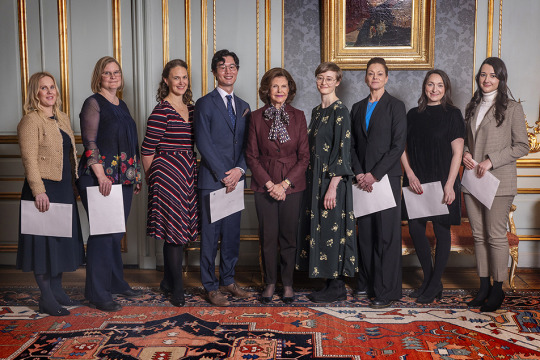

The Drottning Diaries
On January 16th, 2024, Her Majesty Queen Silvia of Sweden awarded scholarships to researchers. The scholarships were for research about children and disabilities. The ceremony where the researchers received the awards was held at the Royal Palace. The scholarships were awarded from Queen Silvia's Jubilee Trust.
The researchers that received scholarships from Queen Silvia's Jubilee Trust:
Anita Birovecz, PhD student at Karolinska Institutet
Katja Sjöblom, PhD student at Karolinska Institutet
Karin Persson, PhD student at Lund University
Livia van Leuven, PhD student at Karolinska Institutet
Jonas Mellgren, PhD student at the University of Gothenburg
Anna Hallin Provenzano, PhD student at Karolinska Institutet
Elizabeth Jennions, PhD student at the University of Gothenburg
Emma Hedlund, PhD student at Lund University
Maria Dellenmark-Blom, PhD student at Sahlgrenska Academy
pc: kungahuset
6 notes
·
View notes
Text
A message in a bottle
A Message in a bottle is something very special today, and the curiosity to find out what the writer had left behind is particularly great, and usually it was a nice happy message. Unlike today, the messages back then were not happy ones. The news should begin with the Greek Theophrastus, who put small messages in amphora and asked for a reply from the finder in order to study the movement of water. Christopher Columbus is also said to have put a message to King Ferdinand in a small barrel when he was afraid of sinking during a storm in 1493. Unfortunately for him, the messages never arrived, but he himself survived the storm. In the 16th century, Queen Elizabeth I also came up with the idea of introducing the office of the uncorker of ocean bottles. His task was to collect all the bottles and open them, because there was a belief that spies tried to send secrets this way.

On 28 September 1875, the schooner Maria Helena under the command of Captain Arend B. Schumacher (1837-1913) was caught in a hurricane while sailing in the Skagerrak. The ship sprung a leak and before it capsized, Schumacher wrote this message and a farewell letter to his family. All his men drowned, but he himself saved himself on the cabin roof. A few days later he was rescued by a Swedish brig, and a few days later a fisherman found the bottle and sent it to the German embassy in Oslo, which forwarded it to the family.
Translation of the message:
Dear Sara and children. I am writing these lines in the last hour of my life. It is Tuesday 28 September at 1 a.m., a gale from the WNW, and our ship must have sprung a leak due to heavy seas. We pump all night with all our pumps, but we still have 4 feet of water in the hold. We want to try to get to Sweden. But little hope. May the good Lord have mercy on us. I am confident. Dear parents, do not leave my wife and children. Farewell. - Photo by me- IMM Hamburg
In fact, messages in bottles were written as SOSs or calls for help from shipwrecked sailors or sailors in distress hoping for help. If such a message was found, it had to be handed in immediately to the local authorities, who took care of everything else and forwarded the message to the consul, who then decided whether help was necessary or not.

Another message from the late 19th century:
Dear Parents, 3 Feb. (1898)9 am. We are in an extremely critical situation & we don't know if we will survive the same. Yesterday we had a collision with the Hamburg barque Poncho, which hit us in the stern & caused 2 holes below deck. As a result, we could no longer continue our voyage because of the extremely high seas before the wind & had to turn the ship both ways during the night to such an extent that the collision bulkhead between Provisions Room No. IV was damaged by the seas pushing in & No. IV room ran full of water. We are now only dependent on the pumps & the question is whether they will be able to cope with the water. there is still a NW storm & terribly high seas, a steamer is close by, but it cannot give us any help in the high seas. Take this as the last message. Farewell, may heaven protect us. Your son T. Breckwoldt on board the Hamburg steamer Karnak. - The young man survived the accident, unlike the crew of the Poncho. - Photo by me- IMM Hamburg
But also emigrants or inhabitants of very small islands sent messages in bottles. They would add some money or tobacco in the hope that the finder would pass the message on to the person on land.
The sending of messages in bottles became particularly popular in the work of Edgar Allen Poe, MS. Found in a Bottle, 1833, or Charles Dickens' A Messages from the Sea, 1860. this even caused a real bottle craze, as people hoped to receive nice replies from abroad.
So do today's mailers or stamp collectors hoping to get a message back with a foreign stamp.
136 notes
·
View notes
Text
Queen Victoria's Currently living Eldest Decendants and Eldest Ever Descendants
This list is as of 19 April 2024
CURRENTLY LIVING
The Lady Pamela Hicks (19 April 1929) (95 years, 0 months, 0 days)
Princess Astrid, Mrs. Ferner (12 February 1932) (92 years, 2 months, 7 days)
Count Bertram Friedrich zu Castell-Rüdenhausen (12 July 1932) (91 years, 9 months, 7 days)
Mrs. Anne Mary Sibylla Liddell-Grainger (28 July 1932) (91 years,8 months, 22 days)
Princess Caroline Mathilde Adelheid Sibylla Marianne Erika von Sachsen-Coburg und Gotha (5 April 1933) (91 years, 0 months, 14 days)
Princess Dorothea Charlotte Karin of Hesse (24 July 1934) (89 years, 8 months, 26 days)
Princess Margaretha Désirée Victoria, Mrs. Ambler (Sweden, 31 October 1934) ( 89 years, 5months, 13 days)
Countess Viktoria Adelheid Clementine Louise von Castell-Rüdenhausen-Von Huntington-Whiteley (26 Februrary 1935)(89 years, 1 months, 24 days)
Prince Edward George Nicholas Paul Patrick, The Duke of Kent (9 October 1935) (88 years, 6 months, 10 days)
Miss Elizabeth Alice Abel Smith (5 September 1936) (87 years, 7 months, 14 days)
Eldest LIVED Descendants:
On 12 June 2025, Princess Astrid, Mrs. Ferner will join this list if she is still living.
Prince Philip, The Duke of Edinburgh (10 June 1921-9 April 2021) ( 99 years, 10 months, 11 days)
Princess Alice of Albany, Countess of Athlone (25/02/1883-03/01/1981) (97 years, 10 months, 10 days)
Queen Elizabeth II of The United Kingdom (21 April 1926-8 September 2022) ( 96 years, 4 months, 18 days)
King Mihai I of Romania (25/10/1921-05/12/2017) ( 96 years, 1 month, 11 days)
Count Carl Johan Bernadotte af Wisborg (Sweden) (31/10/1916-05/05/2012) (95 years, 6 months, 5 days )
The Lady Pamela Hicks (19 April 1929) (95 years, 0 months, 0 days)
Count Sigvard Bernadotte af Wisborg (of Sweden) (07/06/1907-04/02/2002) (94 years, 7 months, 28 days )
Lady Katherine Brandram (Princess of Greece and Denmark) (04/05/1913 02/10/2007) ( 94 years, 4 months, 27 days )
Infanta Dona Beatriz Isabel Federica Alfonsa Eugénie Cristina Maria Teresia Bienvenida Ladislàa of Spain, The Princess of Civitella-Cesi (22/06/1909-22/11/2002) (93 years, 5 months, 1 day)
Patricia Edwina Victoria Mountbatten- Knatchbull , The 2nd Countess Mountbatten of Burma (14/02/1924-13/06/2017) ( 93 years, 4 months)
FACTS:
The Duke of Edinburgh is the husband and third cousin of Queen Elizabeth II, first cousin of Lady Katherine Brandram, The Countess Mountbatten of Burma & Lady Pamela (Mountbatten) Hicks & uncle to Princess Dorothea Charlotte Karin of Hesse. He is also a 1st cousin 1x removed of Queen Sofia of Spain, King Constantine II of the Helenes and Princess Irene of Greece & Denmark and The Duke of Kent (The Duke of Kent’s mother Marina was The Duke of Edinburgh’s first cousin).
Queen Elizabeth II is a 3rd cousin of The Countess Mountbatten of Burma, Lady Pamela Mountbatten, The Duke of Edinburgh. She is the wife of The Duke of Edinburgh. Through her marriage, she is an aunt to Princess Dorothea Charlotte Karin of Hesse. She is a first cousin of The Duke of Kent.
Lady Pamela Hicks is a 3rd cousin of Queen Elizabeth II, a first cousin of The Duke of Edinburgh, her big sister was The Countess Mountbatten of Burma.
Princess Astrid, Mrs. Ferner is a third cousin of The Countess Mountbatten of Burma, The Duke of Edinburgh, Queen Elizabeth II & Lady Pamela Hicks.
The Countess of Althorne was the last surviving grandchild of Queen Victoria. By her marriage, The Countess of Althorne was also a great aunt of Queen Elizabeth II-she married QEII’s grandmother’s brother
King Mihai I of Romania was the last monarch of Romania, he was also a great grandchild of Queen Victoria twice-once through his mother (via Victoria, Princess Royal) and once through his father (via Alfred, Duke of Saxe-Coburg and Gotha)
Sweden’s Count Carl Johan Bernadotte af Wisborg & Count Sigvard Bernadotte af Wisborg were brothers as well as uncles to King Carl XVI Gustaf, Princess Margareta, Mrs. Ambler, Princess Birgitta of Sweden, Princess of Hohenzollern, Princess Désirée, Baroness Silfverschiöld, Princess Christina, Mrs. Magnuson, Queen Margrethe II of Denmark, Princess Benedikte of Sayn-Wittgenstein-Berleburg & Queen Anne-Marie of Greece.
Countess Viktoria Adelheid Clementine Louise von Castell-Rüdenhausen-Von Huntington-Whiteley was a great granddaughter of Prince Leopold, The Duke of Albany, thus a great great granddaughter of Queen Victoria. She is also the younger sister of Count Bertram Friedrich zu Castell-Rüdenhausen.
#Queen Victoria#Queen Victoria's Descendants#British Royals#Greek Royals#Mountbatten Royals#German Royals#Swedish Royals
3 notes
·
View notes
Text


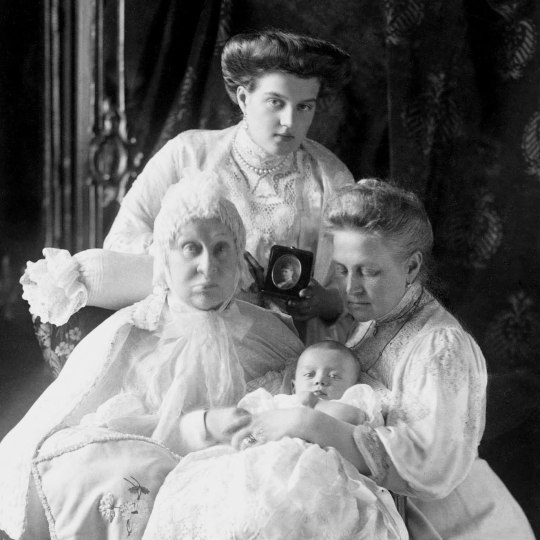

April 18, 1890 - Grand Duchess Maria Pavlovna was born in St. Petersburg as the daughter of Grand Duke Paul Alexandrovich and Grand Duchess Alexandra Georgievna. This means she was a cousin of Tsar Nicholas II and Prince Philip, the Duke of Edinburgh. She was named after her late grandmother, Empress Maria Alexandrovna, and her aunt, grandaunt, and godmother, Empress Maria Feodorovna.
Maria was not yet two years old when her mother died from complications after giving birth to Maria's younger brother, Grand Duke Dmitri Pavlovich. Grand Duke Paul was so distraught by the unexpected death of his wife that he neglected his two small children, who were left in the care of his elder brother, Grand Duke Sergei Alexandrovich. Growing up without a mother and a frequently absent father, Maria and her brother Dimitri became very close, relying on each other for affection and companionship.
Shortly after Easter 1907, Prince Wilhelm, Duke of Södermanland, visited St. Petersburg and was introduced to the 16-year-old Maria Pavlovna. The prince was tall, thin, dark, and distinguished-looking "with beautiful grey eyes," Maria recalled in her memoirs. He stayed for dinner, and the following day, Maria was told that he wished to marry her. The official betrothal was announced in June 1907 at Peterhof Palace.
Maria Pavlovna later wrote that she felt her aunt had rushed her into the marriage. In her memoirs, Maria wrote: "I was using Wilhelm, in a sense, only to obtain my freedom." She and Prince Wilhelm married the following year in Tsarskoye Selo, and she became Princess Maria, the Duchess of Södermanland. The couple had one child together in 1909, Prince Lennart (later Lennart Bernadotte).
Their marriage was not happy, and they dissolved in March 1914. Maria returned to her home country in the same year as the divorce. After the revolution, she fled to France, and towards the end of her life, she lived in Konstanz, West Germany, near her son Lennart and his family.
Photo 1: Prince Wilhelm and Grand Duchess Maria Pavlovna photographed on their wedding day in 1908.
Photo 2: Grand Duke Sergei Alexandrovich and Grand Duchess Elizabeth Feodorovna photographed with Grand Duke Paul Alexandrovich and his children Dmitri and Maria in 1892. Portrait taken from Wikimedia Commons.
Photo 3: Photograph of Grand Duchess Alexandra Iosifovna, her daughter Queen Olga of the Hellenes, her great-granddaughter Princess Maria and her great-great-grandson Prince Lennart of Sweden. Princess Maria is holding a photograph of her mother, Grand Duchess Alexandra Georgievna. The photograph was taken in 1909.
Photo 4: Prince Wilhelm and Princess Maria were photographed together in 1908 at their home, Stenhammar Castle. Maria is pictured wearing the Sweden dress. Portrait taken from Wikimedia Commons.
Follow my blog & Instagram for more royal history
#swedish royal family#russian imperial family#royal history#grand duchess maria pavlovna#princess maria#prince wilhelm#prince wilhelm of sweden#prince lennart#lennart bernadotte#on this day#today in history#swedish history#russian history
6 notes
·
View notes
Text

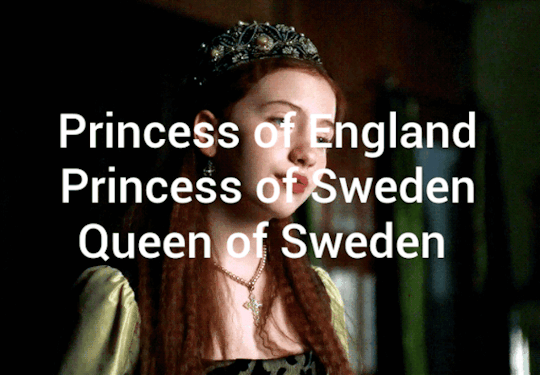

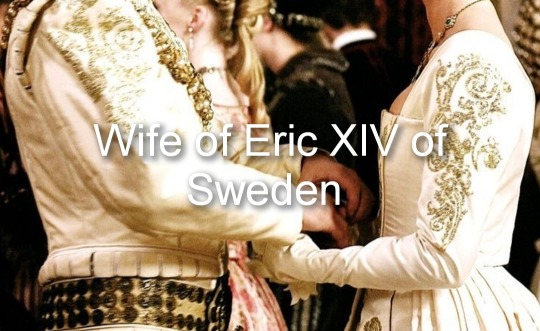

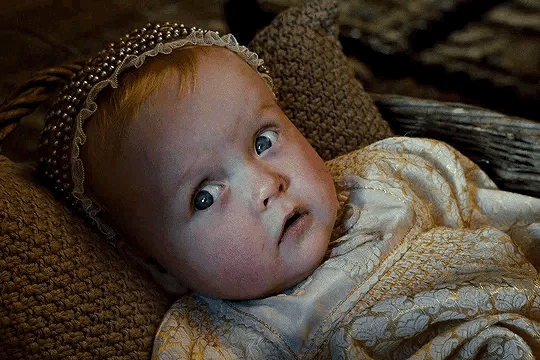
A happier life for Henry VIII's children. Part 2.
Elizabeth was the second daughter of King Henry VIII of England and his second wife Anne Boleyn. When the girl was 3 years old, the king annulled the marriage to her mother. Henry sent Anne to a convent and forbade Anne to communicate with her daughter, and soon afterward married Jane Seymour. She developed a close relationship with her stepmother, brother and sister. In 1547, her father died and Elizabeth was finally able to meet her mother. The meeting between mother and daughter after years of separation was very touching. When Anne saw Elizabeth, she could not believe that this beautiful girl was her daughter. First they cried for a long time in each other's arms, and then they sat up all night talking. They had a lot to say to each other. So their meetings became more and more frequent, and Edward allowed his father's second wife to stay with Elizabeth. In 1557 Edward VI began to look for worthy suitors from Protestant countries, for the hand of his sister, and his choice fell on the eldest son of the King of Sweden, Prince Eric. In the king's opinion, this marriage was to strengthen the sympathy of his subjects for him. In 1558, the princess became the wife of the heir to the Swedish crown, and 2 years later they became King and Queen of Sweden. It is said that at their first meeting the prince was so enchanted by her beauty that he lost the power of speech. Their married life was strong and passionate. For her husband Elizabeth became the most important confidante, with whom he discussed many problems. Six children were born in the marriage:
Gustav II of Sweden (1559 - 1605) Not interested in politics and never wanted to be king. Overthrown and killed by conspirators, including his own son Charles. Husband of Maria of Austria. Father of 4 children: Charles IX, Ludwig, Frederick, Elizabeth.
Anne of Sweden (1560 - 1634) Countess of East Friesland. At the age of 18 she married her cousin Enno III. The marriage was a happy one for both spouses. They became the parents of 9 children: Edzard III, Sabina, Agnes, Johann, Gustav, Rudolf, Christina, Sophia, Christian.
Magnus of Sweden(1561 - 1619) In 1582 he married his cousin Mary of England. They had 4 children: Nils, Katharina, Gunilla, Arnold. Magnus was widowed in 1590. And in 1592 he married his mistress Maria Oberg, but before that he received from his elder brother-king and his mother a permission to remarry. From his second wife he had 6 children: Magdalena, Sven, Hokon, Valdemar, Ingeborga, Svante.
Johan of Sweden(1565 - 1630) From childhood Johan was interested in navigation and discoveries. Therefore, he spent most of his life traveling, exploring lands not previously known. He was never married, however he recognized 3 children: Brita, Lars, Eric. And upon his death, he left each child a generous inheritance.
Cecily of Sweden(1567 - 1634) Macgravine of Baden-Rodemachern. In 1583 became the wife of Edward Fortunatus They became the parents of 5 children: Christoph III, Cecily, Elizabeth, Ottilia, Herman. In 1603, her husband died and Cecily was offered remarriage
Virginia of Sweden(1570 - 1606) Duchess of Holstein-Hottorp, wife of Johann Adolf. Virginia was older than her husband by 5 years, but despite this their marriage was happy. They had 7 children: Frederick III, Elisabeth, Conrad, Dorothea, Gedviga, Albrecht and Augusta. The Duchess died of childbirth fever a week after the birth of the last child. After the death of his wife, Johann lived the remaining 10 years until his death as a widower.
In 1568, the queen returned briefly to England for her mother's funeral. In 1577, King Eric XIV of Sweden died, and Elizabeth mourned her husband's death bitterly. But fortunately for Elizabeth, she had her children and grandchildren by her side, who became the meaning of her life. In addition, the Queen Dowager actively influenced the policies of her eldest son, King Gustav II. Gustav, weak-willed and indecisive, was not interested in ruling the state. In fact, the kingdom was ruled by Elizabeth, which did not please her daughter-in-law. Because of this, the two women often conflicted with each other. In March 1603, the Queen Dowager of Sweden died. She was buried in Uppsala Cathedral next to her husband. And 2 years later Gustav II was overthrown and killed. Her grandson Charles became the next king of Sweden.
Tumblr: History.Period Drama
#history#royal family#royalty#history au#au#royal#the tudors#henryviii#british royal family#anne boleyn#english history#tudors#elizabeth i#marytudor#edwardvi#jane seymour#catherine of aragon#britishmonarchy#royals#english royalty#the other boleyn girl#house of tudor#Tudor time
2 notes
·
View notes
Text
Partial List of Royal Saints
Saint Abgar (died c. AD 50) - King of Edessa, first known Christian monarch
Saint Adelaide of Italy (931 - 999) - Holy Roman Empress as wife of Otto the Great
Saint Ælfgifu of Shaftesbury (died 944) - Queen of the English as wife of King Edmund I
Saint Æthelberht of Kent (c. 550 - 616) - King of Kent
Saint Æthelberht of East Anglia (died 794) - King of East Anglia
Saint Agnes of Bohemia (1211 - 1282) - Bohemian Princess, descendant of Saint Ludmila and Saint Wenceslaus, first cousin of Saint Elizabeth of Hungary
Saint Bertha of Kent (c. 565 - c. 601) - Frankish Princess and Queen of Kent as wife of Saint Æthelberht
Saint Canute (c. 1042 - 1086) - King of Denmark
Saint Canute Lavard (1096 - 1131) - Danish Prince
Saint Casimir Jagiellon (1458 - 1484) - Polish Prince
Saint Cormac (died 908) - King of Munster
Saint Clotilde (c. 474 - 545) - Queen of the Franks as wife of Clovis I
Saint Cunigunde of Luxembourg (c. 975 - 1033) - Holy Roman Empress as wife of Saint Henry II
Saint Edmund the Martyr (died 869) - King of East Anglia
Saint Edward the Confessor (c. 1003 - 1066) - King of England
Saint Edward the Martyr (c. 962 - 978) - King of the English
Saint Elesbaan (Kaleb of Axum) (6th century) - King of Axum
Saint Elizabeth of Hungary (1207 - 1231) - Princess of Hungary and Landgravine of Thuringia
Saint Elizabeth of Portugal (1271 - 1336) - Princess of Aragon and Queen Consort of Portugal
Saint Emeric (c. 1007 - 1031) - Prince of Hungary and son of Saint Stephen of Hungary
Saint Eric IX (died 1160) - King of Sweden
Saint Ferdinand (c. 1199 - 1252) - King of Castile and Toledo
Blessed Gisela of Hungary (c. 985 - 1065) - Queen Consort of Hungary as wife of Saint Stephen of Hungary
Saint Helena (c. 246 - c. 330) - Roman Empress and mother of Constantine the Great
Saint Henry II (973 - 1024) - Holy Roman Emperor
Saint Isabelle of France (1224 - 1270) - Princess of France and younger sister of Saint Louis IX
Saint Jadwiga (Hedwig) (c. 1373 - 1399) - Queen of Poland
Saint Joan of Valois (1464 - 1505) - French Princess and briefly Queen Consort as wife of Louis XII
Blessed Joanna of Portugal (1452 - 1490) - Portuguese princess who served as temporary regent for her father King Alfonso V
Blessed Karl of Austria (1887 - 1922) - Emperor of Austria, King of Hungary, King of Croatia, and King of Bohemia
Saint Kinga of Poland (1224 - 1292) - Hungarian Princess, wife of Bolesław V of Poland and niece of Saint Elizabeth of Hungary
Saint Ladislaus (c. 1040 - 1095) - King of Hungary and King of Croatia
Saint Louis IX (1214 - 1270) - King of France
Saint Ludmila (c. 860 - 921) - Czech Princess and grandmother of Saint Wenceslaus, Duke of Bohemia
Blessed Mafalda of Portugal (c. 1195 - 1256) - Portuguese Princess and Queen Consort of Castile, sister of Blessed Theresa of Portugal
Saint Margaret of Hungary (1242 - 1270) - Hungarian Princess, younger sister of Saint Kinga of Poland and niece of Saint Elizabeth of Hungary
Saint Margaret of Scotland (c. 1045 - 1093) - English Princess and Queen Consort of Scotland
Blessed Maria Cristina of Savoy (1812 - 1836) - Sardinian Princess and Queen Consort of the Two Sicilies
Saint Matilda of Ringelheim (c. 892 - 968) - Saxon noblewoman and Queen of East Francia as wife of Henry I
Saint Olaf (c. 995 - 1030) - King of Norway
Saint Olga of Kiev (c. 900 - 969) - Grand Princess of Kiev and regent for her son Sviatoslav I, grandmother of Saint Vladimir the Great
Saint Oswald (c. 604 - 642) - King of Northumbria
Saint Radegund (c. 520 - 587) - Thuringian Princess and Frankish Queen
Saint Sigismund of Burgundy (died 524) - King of the Burgundians
Saint Stephen of Hungary (c. 975 - 1038) - King of Hungary
Blessed Theresa of Portugal (1176 - 1250) - Portuguese Princess and Queen of León as wife of King Alfonso IX, sister of Blessed Mafalda
Saint Vladimir the Great (c. 958 - 1015) - Grand Prince of Kiev and grandson of Saint Olga of Kiev
26 notes
·
View notes
Photo
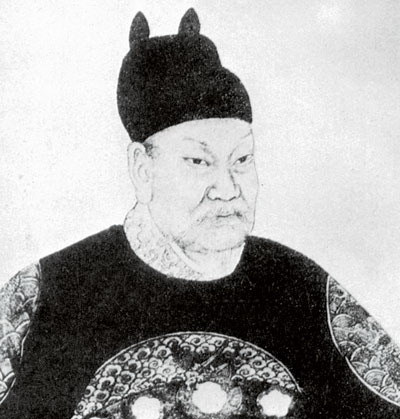
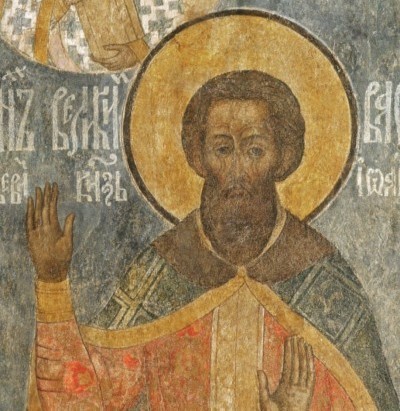




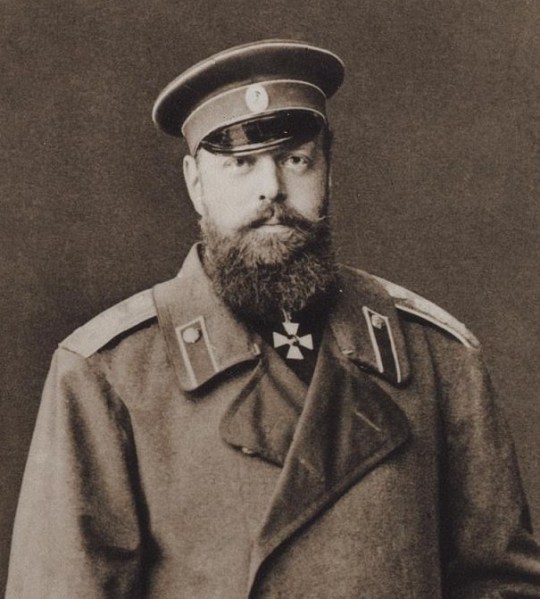

Royal Birthdays for today, March 10th:
Qian Liu, King of Wuyue, 852
Vasily II, Grand Prince of Moscow, 1415
Ferdinand II, King of Aragon, 1452
Ferdinand I, Holy Roman Emperor, 1503
Maria Elizabeth of Sweden, , 1596
Louise of Mecklenburg-Strelitz, Queen of Prussia, 1776
Alexander III, Tsar of Russia, 1845
Prince Edward, Duke of Edinburgh, 1964
#prince edward#alexander iii#Louise of Mecklenburg-Strelitz#ferdinand i#ferdinand ii#vasily ii#qian liu#Maria Elizabeth of Sweden#royal birthdays#long live the queue
17 notes
·
View notes
Text


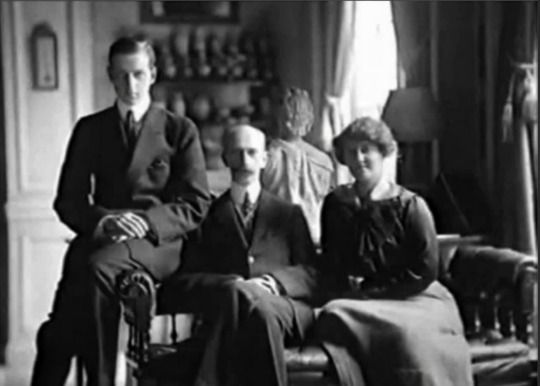
Grand Duchess Maria Pavlovna (the Younger; 1890 - 1958) and her brother Grand Duke Dmitry Pavlovich (1891 - 1942)
Grand Duchess Maria Pavlovna and her brother, Grand Duke Dmitry Pavlovich, children of Grand Duke Pavel Alexandrovich and Grand Duchess Alexandra Georgevna, did not have happy lives. Their mother died giving birth to Dmitry. Several years later, their father married morganatically and was banished from Russia by Tzar Nicholas II, who did not permit him to take his children with him.
Maria and Dmitry were raised by their uncle, Grand Duke Sergei Alexandrovich, and his wife Grand Duchess Elizabeth Feodorovna. Unfortunately, Grand Duke Sergei was murdered and their aunt Elizabeth, the only mother Dmitry had known, decided to take the veil. She arranged a marriage to a Swedish Prince for young Marie and made sure Dmitry started his military education. Unfortunately, later Dmitry became famous for his participation in the murder of Rasputin.
Brother and sister remained very attached to each other all through their peripatetic lives although their relationship was at times rocky. After leaving Russia, Dmitry drifted through Persia, London, Paris, and the United States, his life plagued by depression and tuberculosis. He had a relationship with Coco Chanel and married and divorced a wealthy American socialite. His only child became the major of Palm Beach in Florida (where some of his descendants still reside.)
Marie was the most resilient of the two. When she divorced her first husband; the child she had with him stayed at the Swedish Court (although she saw him from time to time.) She re-married, had another child who died, and divorced her second husband as well. She worked in couture, as a consultant for a high-end store, as a photographer, and wrote for fashion magazines. She also authored two books about her experiences (The Education of a Princess, and A Princess in Exile) that were very successful (they are very interesting and worth reading.)
Toward the end of her life, Marie went to live with her son and died by his side. Dmitry died in Sweden, while in a sanatorium taking care of his tuberculosis. His nephew made sure that his body was interred next to his sister's.
And as I have said before...all roads, or at least many lead to Phillip, Duke of Edinburgh. Marie and Dmitry were his first cousins on his mother's side.
Photographs: 1 and 2: Dmitry Pavlovich and his sister Maria Pavlovna 3. Dimitry and Maria with their father, Grand Duke Pavel Alexandrovich
#russian history#romanov dynasty#romanov family#Grand Duchess Maria Pavlovna#Grand Duke Dmitry Pasvlovich#Grand Duke Pavel Alexandrovich
14 notes
·
View notes
Text
With two days left to submit nominees, here is where the list stands:
France:
Jean Lannes
Josephine de Beauharnais
Thérésa Tallien
Jean-Andoche Junot
Joseph Fouché
Charles Maurice de Talleyrand
Joachim Murat
Michel Ney
Jean-Baptiste Bernadotte (Charles XIV of Sweden)
Louis-Francois Lejeune
Pierre Jacques Étienne Cambrinne
Napoleon I
Marshal Louis-Gabriel Suchet
Jacques de Trobriand
Jean de dieu soult.
François-Étienne-Christophe Kellermann
Louis Davout
Pauline Bonaparte, Duchess of Guastalla
Eugène de Beauharnais
Jean-Baptiste Bessières
Antoine-Jean Gros
Jérôme Bonaparte
Andrea Masséna
Antoine Charles Louis de Lasalle
Germaine de Staël
Thomas-Alexandre Dumas
René de Traviere (The Purple Mask)
Claude Victor Perrin
Laurent de Gouvion Saint-Cyr
François Joseph Lefebvre
Major Andre Cotard (Hornblower Series)
Edouard Mortier
Hippolyte Charles
Nicolas Charles Oudinot
Emmanuel de Grouchy
Pierre-Charles Villeneuve
Géraud Duroc
Georges Pontmercy (Les Mis)
Auguste Frédéric Louis Viesse de Marmont
Juliette Récamier
Bon-Adrien Jeannot de Moncey
Louis-Alexandre Berthier
Étienne Jacques-Joseph-Alexandre Macdonald
Jean-Mathieu-Philibert Sérurier
Catherine Dominique de Pérignon
England:
Richard Sharpe (The Sharpe Series)
Tom Pullings (Master and Commander)
Arthur Wellesley, 1st Duke of Wellington
Jonathan Strange (Jonathan Strange & Mr. Norrell)
Captain Jack Aubrey (Aubrey/Maturin books)
Horatio Hornblower (the Hornblower Books)
William Laurence (The Temeraire Series)
Henry Paget, 1st Marquess of Anglesey
Beau Brummell
Emma, Lady Hamilton
Benjamin Bathurst
Horatio Nelson
Admiral Edward Pellew
Sir Philip Bowes Vere Broke
Sidney Smith
Percy Smythe, 6th Viscount Strangford
George IV
Capt. Anthony Trumbull (The Pride and the Passion)
Barbara Childe (An Infamous Army)
Doctor Maturin (Aubrey/Maturin books)
Scotland:
Thomas Cochrane
Colquhoun Grant
Austria:
Klemens von Metternich
Friedrich Bianchi, Duke of Casalanza
Franz I/II
Archduke Karl
Marie Louise
Franz Grillparzer
Wilhelmine von Biron
Poland:
Wincenty Krasiński
Józef Antoni Poniatowski
Józef Zajączek
Maria Walewska
Władysław Franciszek Jabłonowski
Adam Jerzy Czartoryski
Antoni Amilkar Kosiński
Zofia Czartoryska-Zamoyska
Stanislaw Kurcyusz
Russia:
Alexander I Pavlovich
Alexander Andreevich Durov
Prince Andrei (War and Peace)
Pyotr Bagration
Mikhail Miloradovich
Levin August von Bennigsen
Pavel Stroganov
Empress Elizabeth Alexeievna
Karl Wilhelm von Toll
Dmitri Kuruta
Alexander Alexeevich Tuchkov
Barclay de Tolly
Fyodor Grigorevich Gogel
Ekaterina Pavlovna Bagration
Prussia:
Louise von Mecklenburg-Strelitz
Gebard von Blücher
Carl von Clausewitz
Frederick William III
Gerhard von Scharnhorst
Louis Ferdinand of Prussia
Friederike of Mecklenburg-Strelitz
Alexander von Humboldt
Dorothea von Biron
The Netherlands:
Ida St Elme
Wiliam, Prince of Orange
The Papal States:
Pius VII
Portugal:
João Severiano Maciel da Costa
Spain:
Juan Martín Díez
José de Palafox
Inês Bilbatua (Goya's Ghosts)
Haiti:
Alexandre Pétion
Sardinia:
Vittorio Emanuele I
Denmark:
Frederik VI
Sweden:
Gustav IV Adolph
11 notes
·
View notes
Photo
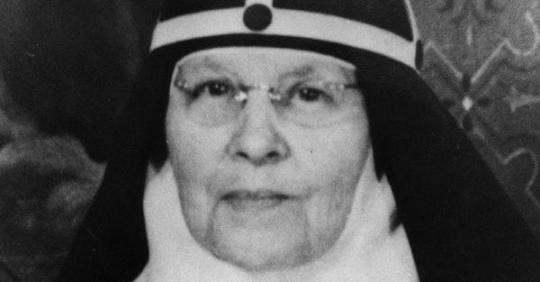
Righteous Swedish Nun
Canonized as a Saint
Elizabeth Hesselblad was a Swedish nurse and nun who transformed her convent into a sanctuary for persecuted Jews during World War II, saving dozens of lives.
Born to a Lutheran family in Sweden in 1870, Elizabeth Hesselblad was the fifth of thirteen children. As a young woman, she moved to the United States for economic opportunity. Elizabeth trained as a nurse and served a population of poor immigrants, many of whom where Catholic. It was her first introduction to the Catholic faith, and she was deeply inspired. She converted to Catholicism, describing the experience as “In an instant the love of God was poured over me.” Elizabeth returned to her home country and became a nun. Inspired by the life of St. Bridget of Sweden, she established a new religious order known as the Bridgettine Sisters. Dedicated to caring for the sick, Elizabeth opened a Bridgettine convent where patients without money were treated with compassion and dignity.
Charismatic and passionate, Elizabeth inspired many others with her faith and good works. She served as Mother Superior to many other nuns who joined her religious order, and affiliated convents were established in England, Italy and India.
During World War II, Elizabeth was horrified at the persecution of European Jews, and resolved to do whatever she could to save them. All of the convents she’d created became sanctuaries for Jewish refugees.
Elizabeth herself settled in Rome, where she served as Mother Superior at the convent there. She personally hid multiple Jewish families, including twelve members of the Piperno-Sed families whom she hid from Dec 1943 until the city’s liberation on June 4, 1944. Years later 87-year-old Piero Piperno remembered, “She saved our lives, but above all, in those dark times, she recognized the dignity of our religion.” It is estimated that at least sixty Jews, and other refugees from German racial oppression, were saved by Elizabeth and other nuns in the religious order she created.
After the war, Elizabeth continued her work helping the poor and sick. She was also known for promoting interfaith dialogue and respect between Catholics and Protestants, and between Christians and non-Christians.
Elizabeth’s righteousness was recognized by Pope John Paul II, who proclaimed her to be a Venerable Servant of God in 1999. She was beatified the next year, and in 2015 Pope Francis canonized her as a saint. Elizabeth became the first Swede to be sainted since St. Bridget over 600 years earlier. She is known as St. Maria Elizabeth.
Israeli Holocaust Memorial Yad Vashem honored as Elizabeth Hesselblad as Righteous Among the Nations in 2004. She was praised for never trying to convert the Jews she rescued but, “rather insisting that they say their Hebrew prayers and fulfill other obligations of their religion.” In 2015 one of Elizabeth’s convents was declared a “House of Life” by the Raoul Wallenberg Foundation.
Elizabeth died in Rome in 1957 at age 87. Her final words to her sister nuns were, “Go to Heaven with hands full of love and virtues.”
For her exceptional righteousness and bravery in saving Jews, we honor St. Maria Elizabeth Hesselblad as this week’s Thursday Hero.
Accidental Talmudist
27 notes
·
View notes
Text
Royal women who died in childbirth in 15/16th century
There are misconceptions that Tudor were somehow unnaturaly cursed, more plagued by fertility issues and deaths in childbirths than the other dynasties.
Plenty of past royal miscarriages and stillbirths were not even recorded. But had they existed they could have contain similiarly grim acount. But we can at least look at records of royal women who died in childbirth in 15th and 16th century:
During, or soon after childbirth/miscarriage:
Philippa of England, Queen of Denmark, Norway and Sweden in 1430
Catherine of Castille, Duchess of Villena in 1439
Catherine of Poděbrady, Queen of Hungary in 1464
Anne of Savoy(Crown Princess of Naples) in 1480
Isabella of Aragon, Queen of Portugal in 1498
Elizabeth of York, Queen of England in 1503
Anne of Foix-Candale, Queen of Bohemia and Hungary in 1506
Maria of Aragon, Queen of Portugal in 1517
Jane Seymour, Queen of England in 1537
Isabella of Portugal, Holy Roman Empress in 1539
Maria Manuela of Portugal, Princess Asturias in 1545
Catherine Parr, Dowager Queen of England in 1548
Isabella of Valois, Queen of Spain in 1568
Claude of Valois, French Princess in 1575
Anne of Austria, Queen of Poland in 1598
Weeks/Months after(never recovered fully):
Catherine of Valois, Dowager Queen of England in 1437
Isabel Neville, Duchess of Clarence in 1476
Barbara Zápolya, Queen of Poland in 1515
Aditionally deaths of royal women:
Blanche of England died of fever in 1409, she was pregnant at the time
Mary of Burgundy died in 1482, weeks after she fell from horse and broke her back. She was pregnant at the time.
Claude of France, Queen of France might have died from childbirth or miscarriage in 1524, although different causes are also speculated by historians-mainly illness and poison.
Catherine of Saxe-Lauenburg, Queen of Sweden died in 1535. She was pregnant and fell badly while dancing. The fall confined her to bed and lead to complications and eventually her death.
Joanna of Austria, Grand Duchess of Tuscany had fell from stairs in 1578 eight months pregnant. She then had premature labour where baby was in difficult position and both of them died.
Deaths due to cancer of reproductive organs:
Barbara Radziwiłł, Queen of Poland died in 1551. The cause was widely speculated at the time, but modern historians think it could have been cervical or ovarian cancer.
Mary I of England died in 1558 fallowing phantom pregnancy. Historians think it could have been ovarian or uterine cancer.
(Some might disagree with Catherine of Valois dying of childbirth. But imo, if you think her giving birth and her death detoriating not long after is not at least contributing factor, then you’re insane.)
It’s a lot of women. Those were the days. Men fought on battlefields and women had battlefield of their own. The most heartbreaking for me are the cases where mother died in childbirth and the child didn’t live or died young.
I have probably missed some women. I mostly fallowed just main royal line. Queens, spouses of crown princes and blood princesses. But there should have also been wives of the rest of the princes, i just looked at few.
Also in some cases, the cause of death was not recorded, nor was there any theory about possible pregnancy pushed foward by historians. We can rule out those royal women who died pass their childbearing years. But younger ones we can only speculate about. Although in 16th century if the royal woman died of illness or generally poor health, usually it is mentioned. In 15th-usually nothing.
So we will never get 100% accuracy, but i try.
It’s certainly interesting to me reading that Queen of Sweden died after falling badly during dancing. I thought that period superstition(which lingers to today) that one should not dance is total bull. But aparently they had some dances which could cause pregnant lady harm. Idk, maybe some of those jumpy ones could cause woman to trip and fall very easily?
I will probably update this in future. Write to me if I made mistake in anything or if you know of any more royal women who died either in childbirth or after or while pregnant in 15/16th century. Or if you know anything more about death of Claude of France.
15 notes
·
View notes